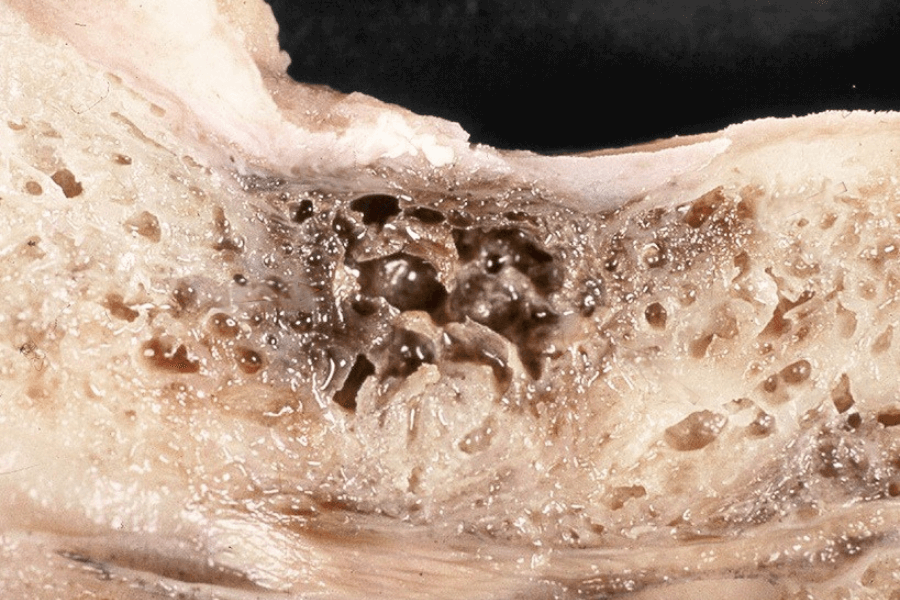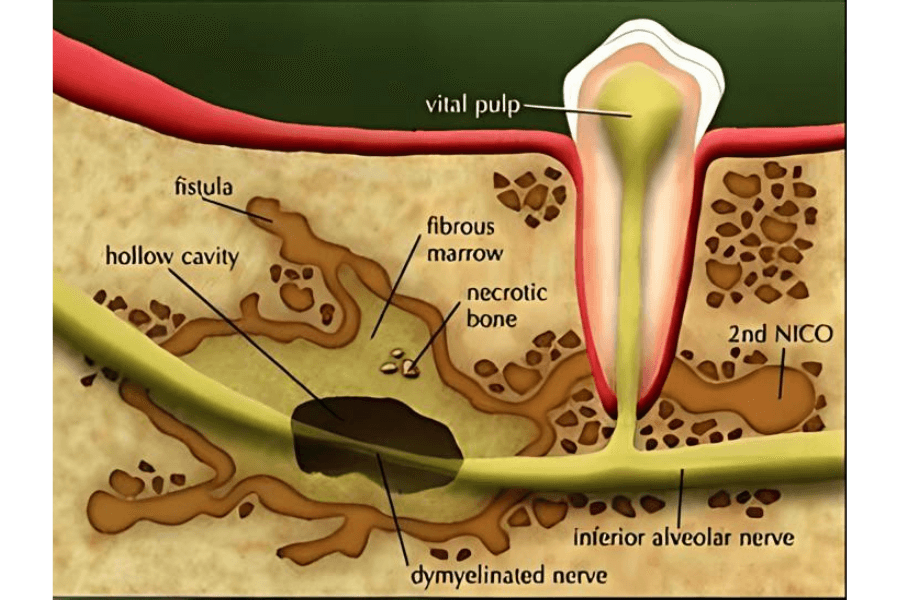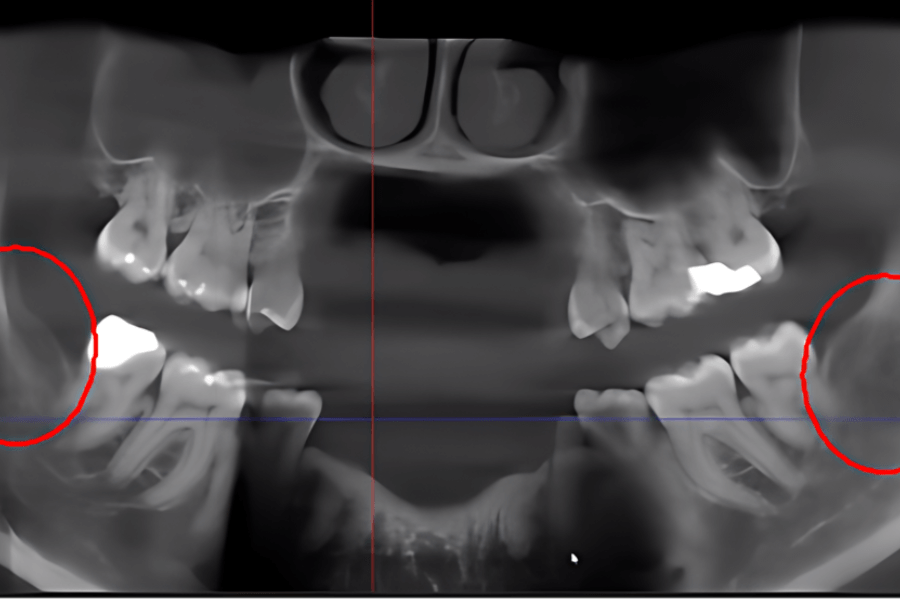Treatment of Osteonecrotic Cavitation at Clínica Debora Ayala.
Osteonecrotic cavitation, also known as “Neuralgia-Inducing Cavitational Osteonecrosis,” is a condition characterized by chronic infection in the jaw or maxilla due to the presence of areas of necrotic bone. This condition often occurs when healing after dental extractions is inadequate, resulting in the formation of cavitations or areas of degenerative fatty osteonecrosis. Once established, this pathology can cause local “silent inflammation,” which may be implicated in the development and progression of systemic diseases.
In today’s blog, Dr. Debora Ayala highlights the importance of oral health as an essential component of overall health, introducing the concept of osteoimmunology, which relates bone health to the immune system.

Why Treat Osteonecrotic Cavitation?
Osteonecrotic cavitation contains inflammatory chemokines such as RANTES – CCL-5, which are also present in many systemic diseases, pathological processes, autoimmune diseases, and some types of cancer. Recognizing and treating this condition brings balance and overall health to patients.
Often, trigeminal neuralgia, which is intense facial pain caused by dysfunction of the 5th cranial nerve (trigeminal nerve), can be related to osteonecrotic cavitation. The presence of these cavitations can press or irritate the trigeminal nerve, triggering episodes of intense pain and discomfort. Accurate diagnosis and treatment of cavitations are essential to alleviate symptoms and improve patients’ quality of life.
Accurate and Individualized Diagnosis
Diagnosing osteonecrotic cavitation can be challenging, as conventional imaging exams often fail to detect the problem.

At Clínica Debora Ayala, we perform a detailed anamnesis and use computed tomography to identify these cavitations. Additionally, we combine imaging exams with blood tests to confirm the need for surgical intervention, especially in cases where dental extractions were performed during systemic imbalance.
Systemic vision of health Approach and Effective Treatment
We adopt an systemic vision of health approach in the treatment of osteonecrotic cavitation, whose primary treatment is surgical, involving the curettage of the necrotic bone.
To promote healthy and efficient regeneration, we use advanced techniques such as ozone therapy and Platelet-Rich Fibrin (PRF). Additionally, we emphasize the importance of proper removal of the periodontal ligament during dental extractions to prevent future cavitations.
Accurate Diagnosis and Importance of Tomography
For an accurate diagnosis, tomography is essential, as it allows us to identify areas with lower bone density associated with osteonecrotic cavitation. This exam, combined with other diagnostic methods such as blood tests, enables us to develop an effective and individualized treatment plan.

Why Choose Clínica Debora Ayala?
At Clínica Debora Ayala, we offer integrated and personalized treatment for osteonecrotic cavitation. Our highly qualified team and advanced technology ensure you receive the best possible care.
With over 34 years of experience, Dr. Debora Ayala is internationally recognized for her contributions to dentistry. Her clinic provides a welcoming environment focused on patient well-being, utilizing modern and minimally invasive techniques. Moreover, the holistic approach ensures personalized treatments that consider patients’ oral and overall health, ensuring long-lasting and high-quality results.

If you suspect you are suffering from this condition, contact us for a detailed evaluation and a personalized treatment plan. Schedule your appointment today and let us help you regain your oral health and improve your quality of life.


